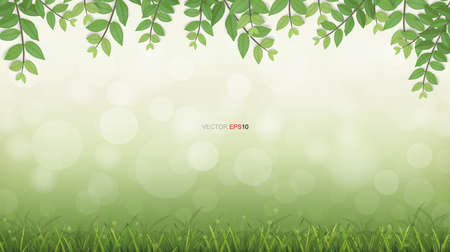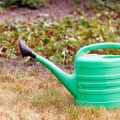1. Introduction to Native Landscaping
Native landscaping is all about using plants that naturally grow in your region, making your yard or garden look beautiful while being eco-friendly and cost-effective. Instead of choosing exotic plants that might struggle with the local weather, native landscaping highlights species that are perfectly adapted to the American environment where you live. These plants have evolved over thousands of years to thrive in local soil, rainfall patterns, and temperatures, so they usually require less water, fertilizer, and maintenance than non-native options.
What Makes a Plant Native?
A native plant is one that has been growing in a particular area for centuries—long before European settlers arrived. In the U.S., examples include wildflowers like Black-Eyed Susan (Rudbeckia hirta) in the Midwest, Purple Coneflower (Echinacea purpurea) on the Great Plains, and California Poppy (Eschscholzia californica) on the West Coast. Native grasses like Little Bluestem or Buffalo Grass are also popular choices.
Examples of Popular Native Plants by Region
| Region | Popular Native Plants |
|---|---|
| Northeast | Eastern Red Columbine, New England Aster, Switchgrass |
| Southeast | Coreopsis, Southern Magnolia, Muhly Grass |
| Midwest | Purple Coneflower, Black-Eyed Susan, Prairie Dropseed |
| Southwest | Desert Marigold, Texas Sage, Blue Grama Grass |
| West Coast | California Poppy, Douglas Iris, Manzanita |
Adaptation to Local Conditions
The biggest advantage of native plants is their ability to handle regional challenges naturally. For instance, drought-tolerant natives in California can survive long dry spells without extra watering. In the Midwest, prairie grasses can handle cold winters and hot summers. Because they’re so well-suited to their home turf, these plants are more resilient to pests and diseases too—meaning you’ll spend less money and effort on pesticides or repairs.
2. Initial Installation Costs Compared to Traditional Landscaping
When starting a new landscape, one of the first things homeowners consider is the up-front cost. Native landscaping can look different from traditional lawns in terms of both design and budget. Let’s break down the typical expenses involved when installing a native landscape and see how they stack up against conventional lawn installations.
Sourcing Native Plants vs. Standard Turf Grass
Native plants are specially adapted to your local climate and soil, but they’re not always available at every big-box store. You might need to visit local nurseries or specialty growers. While some native plants may initially cost a bit more per plant than common grass seed or sod, you often buy fewer of them because they’re spaced further apart and fill in over time.
| Expense | Native Landscaping | Traditional Lawn |
|---|---|---|
| Plant Material | $3 – $10 per plant (varies by species) | $0.05 – $0.25 per sq ft (seed), $0.30 – $0.80 per sq ft (sod) |
| Total for 1,000 sq ft area* | $500 – $1,500 | $150 – $800 |
*Estimates can vary based on region and specific plant choices.
Design Consultation and Planning
Many homeowners choose to consult with a landscape designer when going native, especially if it’s their first time working with these types of plants. Design fees can range from $300 to $1,500 depending on project complexity. However, many local extension offices or native plant societies offer free or low-cost advice that can help reduce this expense.
Other Start-Up Costs to Consider
- Site Preparation: Removing existing turf and prepping soil may be necessary for both options, but sometimes more care is needed for native beds.
- Irrigation: New plantings need watering at first, but natives typically require less irrigation after establishment compared to lawns.
- Mulching: Often used around native plants to reduce weeds and retain moisture; costs are similar for both styles.
How Do These Costs Compare Over Time?
While native landscaping can have slightly higher up-front costs due to specialized plants and potential design help, many homeowners find that the long-term savings in water, fertilizer, mowing, and maintenance more than make up for it. In short, investing a bit more at the beginning can lead to bigger savings down the road—especially as your native garden matures and thrives with less input.

3. Long-Term Maintenance and Resource Savings
One of the biggest reasons homeowners across the U.S. are switching to native landscaping is the savings they see over time. Native plants are adapted to local weather, soil, and pests, so once theyre established, they require much less attention compared to traditional lawns or non-native gardens. Let’s break down these long-term benefits:
Lower Water Bills
Unlike grass lawns and exotic flowers, native plants thrive on natural rainfall. This means you’ll need to water far less often—sometimes not at all after the first year. In drought-prone areas like California or Texas, this can translate into serious savings on your monthly water bill.
Less Fertilizer and Pesticide Use
Because native plants are naturally suited to local conditions, they don’t need regular applications of fertilizers or pesticides to stay healthy. This not only cuts costs but also helps protect local waterways from chemical runoff.
Cost Comparison Table
| Maintenance Task | Traditional Landscaping | Native Landscaping |
|---|---|---|
| Irrigation/Watering | Frequent (weekly or more) | Minimal (after establishment) |
| Fertilizing | Several times per year | Rarely needed |
| Pesticides/Herbicides | Regular treatments needed | Seldom required |
| Mowing/Trimming | Weekly during growing season | Occasional, if any |
| Total Annual Cost* | $500–$1,000+ | $50–$200* |
| *Estimated averages for a standard suburban yard; actual costs may vary by region. | ||
Saves You Time and Effort
If you’d rather spend weekends relaxing than mowing the lawn or pulling weeds, native landscaping is a game changer. Less watering, fewer chemicals, and minimal trimming mean less work all around. Over time, that adds up to more free time and less stress about yard care.
4. Environmental and Community Benefits
Building a Resilient Landscape
One of the major non-monetary advantages of native landscaping is its environmental resilience. Native plants are adapted to local weather conditions, soil types, and pests, which means they require less water, fertilizer, and maintenance compared to non-native species. Over time, this leads to healthier gardens that can withstand droughts, heavy rains, and temperature swings much better than traditional lawns or exotic plantings.
Attracting Pollinators and Supporting Wildlife
Native landscaping naturally attracts local pollinators like bees, butterflies, and hummingbirds. These beneficial creatures play a key role in pollinating not only your garden but also nearby crops and plants in the neighborhood. In addition to pollinators, native plants provide food and shelter for birds and small mammals, supporting a diverse ecosystem right in your backyard. This helps restore natural habitats that may have been lost to development or traditional landscaping.
Reducing the Urban Heat Island Effect
Traditional lawns and hardscapes (like concrete or asphalt) absorb heat during the day and release it at night, raising temperatures in cities—a phenomenon called the “urban heat island effect.” Native landscaping uses trees, shrubs, and groundcovers that provide shade and cool the air through transpiration. This not only makes your property more comfortable during hot summer months but also contributes to cooler overall temperatures in your community.
Comparing Native Landscaping Benefits
| Benefit | Native Landscaping | Traditional Lawns/Exotic Plants |
|---|---|---|
| Water Use | Low (drought-tolerant) | High (requires frequent watering) |
| Wildlife Support | High (provides food & habitat) | Low (limited value for local wildlife) |
| Pollinator Attraction | High (supports bees & butterflies) | Low (fewer native pollinators supported) |
| Heat Reduction | Cools area through shade & transpiration | Lawn offers minimal cooling effect |
| Pest Resistance | Strong (adapted to local pests) | Weaker (often needs chemicals) |
A Win for You and Your Neighborhood
By choosing native plants for your yard, you’re doing more than just saving money over time—you’re helping create a healthier environment for everyone. Native landscaping supports wildlife, saves water, reduces chemical use, and even helps keep your neighborhood cooler during those hot American summers. It’s an investment that pays off in ways money can’t measure.
5. Real-Life Examples and Success Stories
American Homeowners Reaping the Benefits
Many homeowners across the United States have discovered that native landscaping can be a real money-saver. For example, in Austin, Texas, the Johnson family replaced their traditional lawn with native wildflowers and grasses. Within just two years, their water bill dropped by 60% because native plants needed less irrigation. They also noticed fewer pest problems, which meant they spent less on pesticides and fertilizers.
Table: Johnson Family’s Cost Comparison Before and After Native Landscaping
| Yearly Expense | Traditional Lawn | Native Landscaping |
|---|---|---|
| Water Bill | $600 | $240 |
| Pesticides/Fertilizers | $150 | $40 |
| Lawn Maintenance | $400 | $100 |
| Total Annual Cost | $1,150 | $380 |
Businesses Going Green for Savings
It’s not just families who see savings—businesses do too. The Greenway Shopping Center in Minneapolis switched to native prairie plantings around their parking lots. Over five years, they cut their landscaping maintenance costs by more than half. The center also received positive feedback from customers who appreciated the natural look and pollinator-friendly environment.
Community-Wide Success Stories
The city of Santa Monica, California launched a public project replacing turf grass with native plants at several parks. Not only did this reduce water usage by thousands of gallons each month, but the city also saved on maintenance labor and materials. These savings allowed Santa Monica to reinvest in other green initiatives and community programs.
Key Takeaways from Real-Life Experiences:
- Native landscaping often pays for itself within a few years through lower water bills and reduced maintenance.
- Biodiverse plantings attract beneficial wildlife and reduce reliance on chemicals.
- The financial benefits are enjoyed by individual homeowners, businesses, and entire communities.
- The beauty and uniqueness of native landscapes can increase property values and neighborhood pride.
These real-world stories show that making the switch to native landscaping isn’t just environmentally friendly—it’s smart for your wallet too!


